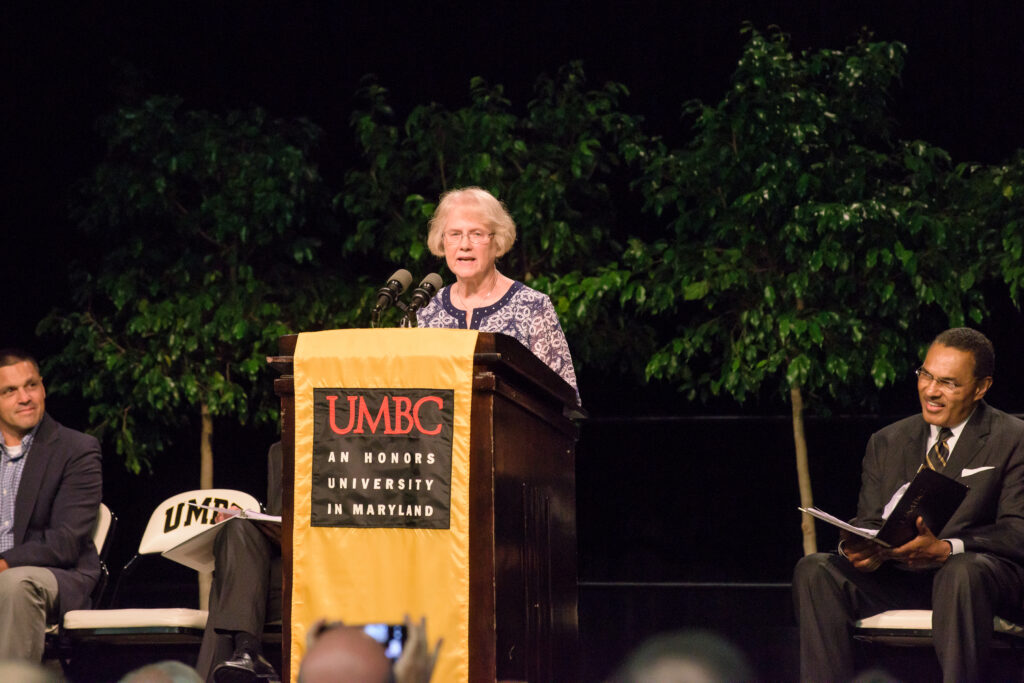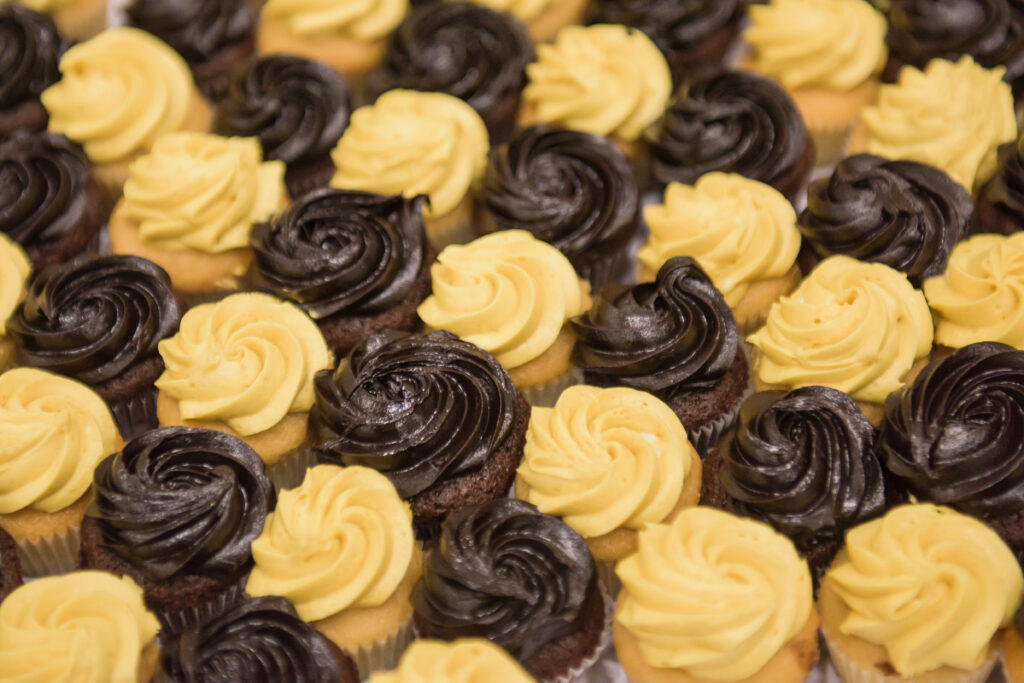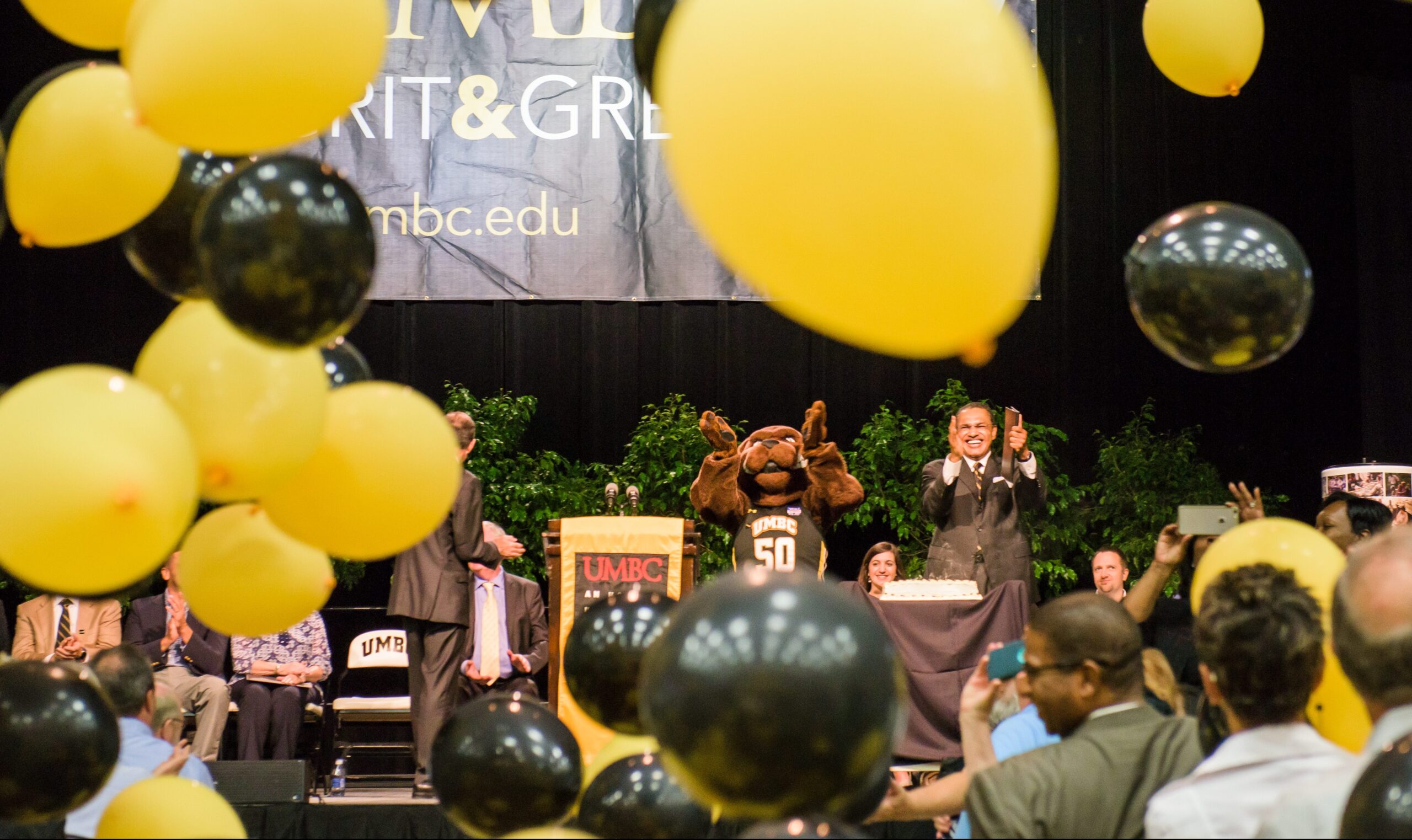On September 19, 1966, the first students began classes at UMBC. Fifty years later to the day, the UMBC community gathered for a special Founders Day celebration to reflect on the first generation of students, faculty, staff, and alumni who paved the way for university to become a national model of inclusive excellence.
Before a full crowd at the Retriever Activities Center (RAC), Robin Mayne ’69, American studies, UMBC’s first graduate, presented a letter she wrote to UMBC’s current freshman class and to future UMBC students over the next fifty years. It will be placed in a time capsule that will be opened in 2066.

Mayne described how her liberal arts education at UMBC inspired her to become a lifelong learner and provided her with the critical thinking skills needed to grapple with the complexities of today’s world.
“At [UMBC’s] core was engagement of both students and faculty in studies, creativity, community, political action, and social awareness and responsibility,” shared Mayne. “In the 50 years since those beginnings, these commitments have not diminished, but have only expanded and intensified.”
Vrinda Deshpande ’20, mathematics, formally thanked Mayne and accepted her letter on behalf of the freshman class. She reflected on her desire, and that of her fellow new Retrievers, to build on the foundation they are inheriting. “With these lessons, I know that my class’s next four years will reflect the same dedication that the first graduating class had to education and changing the world for the better,” Deshpande said.
The program also included top photos from the 50th anniversary celebration weekend and a living history that was presented by faculty, student, staff, and alumni leaders, documenting significant milestones over the university’s 50-year history.
President Freeman Hrabowski delivered the 2016 State of the University Address, reflecting on the university’s growth and achievements over the last 50 years. He highlighted rapid increases in UMBC’s research funding and partnerships, as well as the university’s economic impact. He also spoke to the impressive accomplishments of 70,000 UMBC alumni and the university’s commitment to issues of social justice and equality.
President Hrabowski also highlighted a New York Times story by columnist Frank Bruni, published during UMBC’s 50th anniversary weekend, that praised the university for serving as a national model of inclusive excellence—being a place where students of all backgrounds can achieve great things.
“From the ceiling of the student commons hang flags of countries from which students have come. There are more than 100,” wrote Bruni. “It’s a kind of kaleidoscope, and as I walked under it with Freeman Hrabowski, U.M.B.C.’s dynamic president, he stressed the school’s determination to ‘connect students to people different from themselves and lives different from their own.'”
“This has been a 50-year experiment in Catonsville,” Pres. Hrabowski explained in his remarks at Founders Day. “Can you bring people together from all races, backgrounds, and religions, and have them learning how to work together, to live together, and to listen to each other? That’s what we’re in the process of doing in our country, and it’s what we believe we are doing on this campus and will do even more of in the time to come.”
After commemorating UMBC’s first 50 years, President Hrabowski closed the Founders Day celebration by emphasizing that there is plenty of work still to be done in achieving sustained future success.
“We are forward-looking and responsive. We have a strong focus on inclusive excellence. We believe in high expectations and a passion for learning. But most important, we still believe in hard work.”
Read more about UMBC’s 50th anniversary celebration in The Baltimore Sun article “Over 50 years, UMBC has cultivated a research mission from former pastures” (with video).

Images: UMBC 50th Anniversary Founders Day Celebration, September 19, 2016. Photos by Marlayna Demond ’11 for UMBC. Video by New Media Studio.

